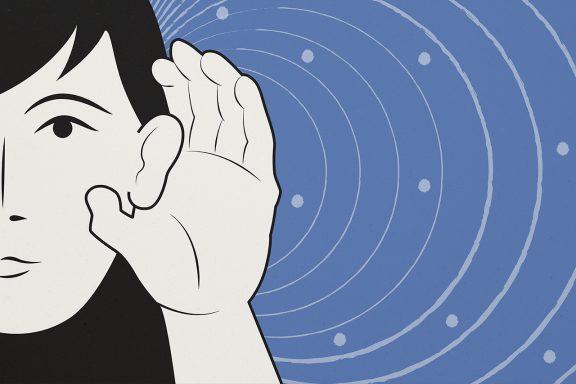
Andrea Dressner was a teenager when she first taught herself American Sign Language.
She developed slight hearing loss and decided to study the language in case the hearing loss grew worse. While Dressner’s hearing eventually stabilized, her pursuit of ASL only grew.
“Many years later, I was at a religious convention and I saw someone signing and I found it really fascinating,” Dressner said. “Then, there was a girl at my congregation who needed someone to interpret for her, and her parents didn’t sign at all, so I did what I could to help and just fully immersed myself in the language.”
Dressner is one of seven interpreters working at Temple’s Disability Resources and Services. Four students currently use their interpreting services. Dressner and the other interpreters accompany the students to classes, meetings and other events where ASL translation is needed. With the help of the interpreters, deaf students can take part in conversations or lectures that they cannot hear.
The DRS Interpreters are provided to students for free for academic-related purposes, but students must submit their course schedules to DRS at least eight weeks before the start of the semester.
If students need interpreters to accompany them to an event or meeting, they must submit a request at least seven days before the event. Additionally, if a DRS interpreter is unavailable to translate at the requested time, DRS will find the student an outside interpreter for free.

Susan Gottesman, who has been interpreting at Temple for 18 years and earned a bachelor’s degree in speech pathology from Rutgers University in 1986, said she, “just kind of fell in love with sign language.”
She said becoming an interpreter required her to learn skills that went beyond the language itself.
She added that there was a long time before ASL was recognized as a legitimate language at all, and not just a communication system. It is starting to be considered a foreign language in high schools and colleges, she said.
A Modern Language Association report from February found that ASL was the third-most popular language studied on college campuses in fall 2016.
Gottesman said that while the ASL program expanded quickly, it is still not considered part of the College of Liberal Arts, which houses foreign languages. Students take ASL through the Department of Communication Sciences and Disorders in the College of Public Health.
Emily Donati is a freelance interpreter and interprets for DRS. She said her schedule is unpredictable when she is freelancing.
“You don’t always know what your schedule is going to look like,” she said. “You kind of have to be flexible and ready to change your schedule pretty rapidly.”
Donati added that when Temple students have an ongoing class request, her schedule can be more consistent.
Donati has been an interpreter at Temple since 2013 and forms bonds with students here. When she freelances, she sees so many people that she may not have a chance to form a connection.
She added that while she enjoyed studying ASL, she didn’t initially think of it as a career path.
“When I stopped studying it, I realized how much I missed it, so I went back to get a degree,” Donati said.
Donati earned an associates degree in applied science in ASL and English Interpreting from the Community College of Philadelphia in 2011.
The interpreters said they run into some language difficulties of their own.
Dressner said interpreting complicated lesson plans is a big challenge she faces.
“It’s difficult to sign information and terms that you don’t know,” Dressner said. “One of my greatest challenges is understanding some of the more complex source material.”
Some professors explain the class material to her or give her access to the lesson beforehand.
For classes that last for two or more hours, interpreters can rotate to give each other breaks.
Dressner has now been interpreting for DRS for 18 years and loves her work.
“I never looked back,” Dressner added. “I feel like I’m giving back to the community and am doing something unique that a lot of people don’t know how to do.”



Be the first to comment